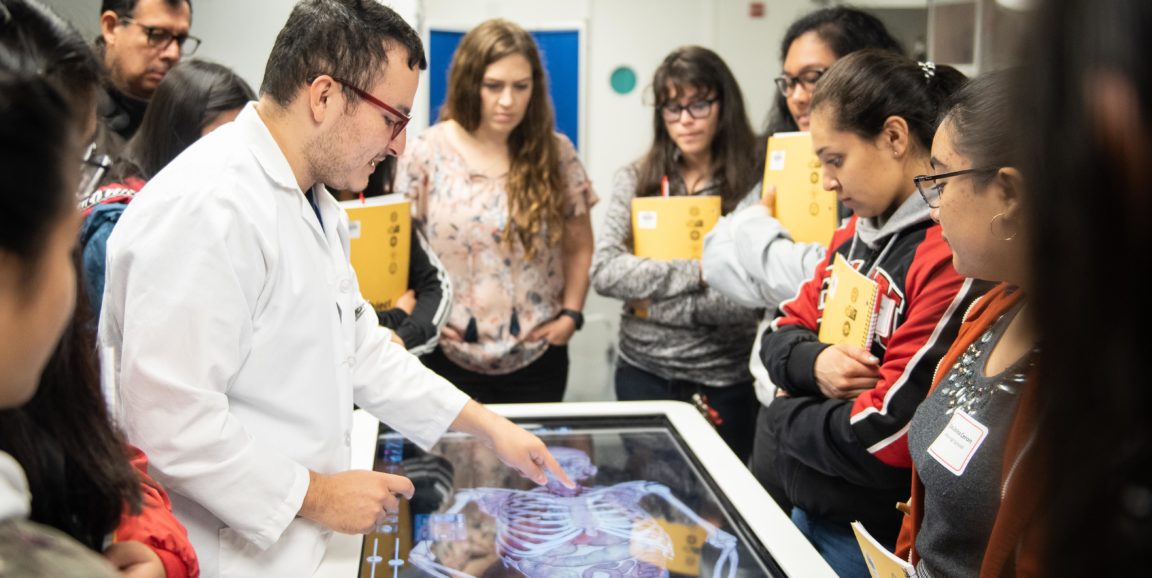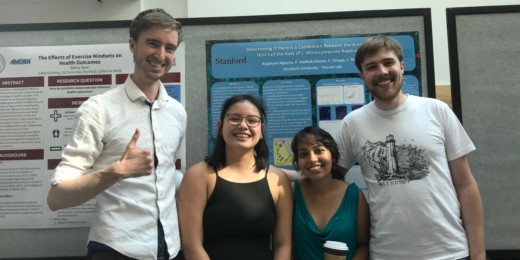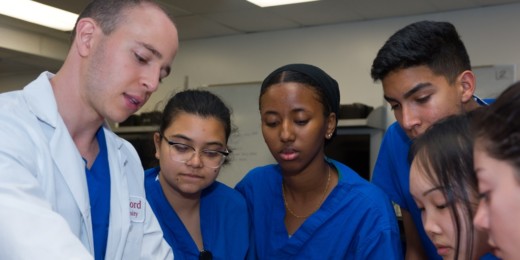What's it really like to be a doctor? Last week, more than 140 teens had the opportunity to see for themselves as part of the day-long event Med School 101 held on the Stanford Medicine campus.
Around 8:30 a.m., students who traveled from their high schools in Palo Alto, San Jose, Daly City, and Gilroy disembarked from busses and began a day filled with classes, lectures and interactive courses in science and medicine, taught by Stanford faculty and staff.
Luis Bartolo, 17, a junior at San Jose High School, attended two morning sessions, one on tanning beds and cancer, the other on emergency medicine and the differences between real doctors and the ones commonly seen in movies and television shows. "I've thought about becoming a radiologist or physical therapist," Bartolo said. After his first session, he spoke with one of the presenters. "It was kind of like a little sneak peek into what they do, a little inside view of what my future might be."
A video offers an inside view of the event:
Damaris Lopez, 17, a junior from Gunn High School who lives in East Palo Alto, said she was drawn to a session on using yoga and mindfulness to combat stress and manage emotions, taught by John Rettger, PhD. "He had a program in East Palo Alto at Cesar Chavez. And I'm from that community. So, it was really interesting to know how people felt with PTSD," Lopez said. "It really touched me."
A session on human anatomy provided students a virtual-reality-based experience using the torso of "Stan," a digitized model that displays the insides of the human midsection: a variety of organs, tissues and skeletal details. Using VR, students took turns inside a computerized operating room, where they could inspect the anatomy of the body. Handheld controllers allowed the user to pick up the torso, rotate it and even remove specific organs.
In a session on medical care during disasters, three emergency physicians discussed the challenges of working on a strike team of health professionals who are deployed around the world in the wake of hurricanes, floods, fires and other crisis situations. Though their jobs put them at the center of devastating human tragedy, the emergency medicine doctors -- Phillip Harter, MD; Barbie Barrett, MD; and Justin Lemieux, MD -- told the students they love the humanitarian aspect of their work.
One student asked, "What's the best thing you can do when there's really no way to help somebody and they're dying?"
"The best thing I've done in all these disasters is to have a smile on my face and be reassuring," Barrett said. "The worst thing is being alone in these things. Just be there. I've done more good with a smile than I have with my stethoscope."
Other sessions were designed to help students stay healthy now, to prepare for whatever their futures may hold. In a session on teen health, adolescent health specialist Sophia Yen, MD, clinical associate professor of pediatrics, urged the students to get an annual checkup with a physician. Ideally, she said, the doctor will help perform a "parent-ectomy" so that the teen and the physician can confidentially discuss health issues -- everything from home and school, to exercise, nutrition, sports, sex, drug use, and mental health -- during the appointment.
One student asked why a physician would ask about this range of issues. Yen explained that physicians are trying to gauge how well the teens are doing both physically and emotionally, and to be alert for signs of depression or substance abuse.
For some students who aspire to careers in medicine, the day helped shift their perspective on their current academic experience. Cade Creighton, 15, a freshman at Palo Alto High School, said that in biology class especially and his science curriculum overall, he expects to be more focused. "There's an emotional part of that, too," he said. "It's not just about memorizing formulas and memorizing procedures; it's about hands-on experience and connecting to people as well."
Creighton said his day at Med School 101 also changed the way he imagines his career. "I have a more defined path of where I need to go to realize my dreams," he said. "And this whole experience for me has really humanized the doctors... They actually care. And they love what they do."
Photo of Cristian Torres and students by Rachel Baker






